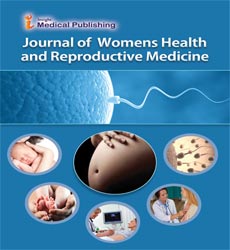Risks of Toxoplasmosis in Pregnancy
Kari Almendingen*
Department of Oncology, Cairo University, Cairo, Egypt
- *Corresponding Author:
- Kari Almendingen
Department of Oncology,
Cairo University,
Cairo, Egypt,
E-mail: khairy@kasralainy.edu.eg
Received Date: November 5, 2021; Accepted Date: November 19, 2021; Published Date: November 26, 2021
Citation: Almendingen K (2021) Risks of Toxoplasmosis in Pregnancy. J Women’s Health Reprod Med Vol.5 No.6:e024.
Description
Toxoplasmosis is a disease caused by a microorganism called Toxoplasma gondii . Microbes are the small creatures that are found around us. Some microbes are important to our health, but others can make us sick. Often used interchangeably, "toxoplasma" and "toxoplasmosis" is not the same thing. Toxoplasma is the name of a microorganism, and toxoplasmosis is a symptomatic disease that can cause it. Although Women are not regularly provided with toxoplasmosis testing as part of their antenatal care. Women worried about this can consulted to midwife or general practitioner for a blood test at any time during pregnancy to check for infection. If recently infected, further testing will be done if the baby is at risk. Remember that this is very rare. Anyone who eats microbial infected food is at risk. Pregnant women working in the countryside, catering, or agriculture are at increased risk because they are more likely to come into contact with the microbial Toxoplasma. The risk is also high if the immune system is weak, such as after an organ transplant, after cancer treatment or if you are infected with HIV.
Pre-pregnancy toxoplasma infection has little or no risk to the foetation, except for females infected up to 3 months before pregnancy. In new-borns, symptoms of congenital toxoplasmosis include hydrocephalus, small cranial, intracranial calcification, retinal choroiditis, stravismus, blindness, epilepsy, psychomotor and mental retardation, thrombocytopenia and Petekia due to anemia. Early pregnancy infection has a low risk of fetal infection (less than 6%), but infection rates range from 60%, and conversely, T gondii infection during embryogenesis is rare, but fetal has a much more serious effect. In contrast, maternal infections in late pregnancy often lead to asymptomatic newborns. However, without proper treatment, these new-borns can develop retinal chorioretinitis and neurological defects in early childhood or early adulthood. The biggest challenge in diagnosing toxoplasmosis is identifying acute (primary) infections and distinguishing them from past (chronic) infections. Toxoplasma infections can be diagnosed by serological, ultrasonography, and amniocentesis. Serological test results for measuring immunoglobulin (IgM) and IgG are often difficult to interpret when distinguishing between acute and chronic infections. After acute infection, IgM antibody titers increase from day 5 and reach a maximum after 1-2 months. At this point, IgM antibodies fall faster than IgG antibodies.
However IgM antibodies often persist for years after an acute infection. In contrast, IgG antibodies are usually detectable within 1-2 weeks after acute infection, peak within 12 weeks-6 months, and are usually detectable throughout life. The absence of IgG and IgM antibodies before or at the onset of pregnancy identifies women who are previously infected and are at risk of infection during pregnancy. Detection of IgG antibodies and lack of IgM antibodies indicate an old infection. However, if the test result is positive for both IgG and IgM, the positive result is difficult to interpret because it may be due to a decrease in IgM antibody levels due to recent or previous infections. The diagnosis is made by a blood test. It is done before or during pregnancy and does not harm your baby. This blood test looks for antibodies that are the body's natural defence against infection. It can take up to 3 weeks for these antibodies to be present after infection. This means that it is important to wait 3 weeks before the blood test to make sure the results are correct.
Open Access Journals
- Aquaculture & Veterinary Science
- Chemistry & Chemical Sciences
- Clinical Sciences
- Engineering
- General Science
- Genetics & Molecular Biology
- Health Care & Nursing
- Immunology & Microbiology
- Materials Science
- Mathematics & Physics
- Medical Sciences
- Neurology & Psychiatry
- Oncology & Cancer Science
- Pharmaceutical Sciences
